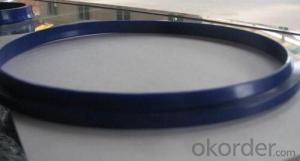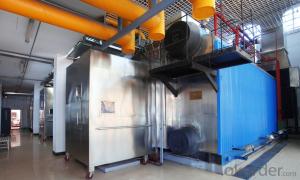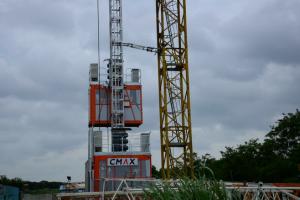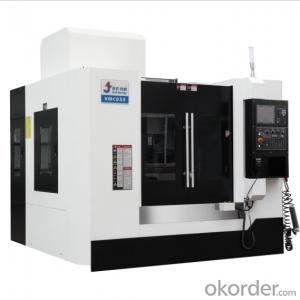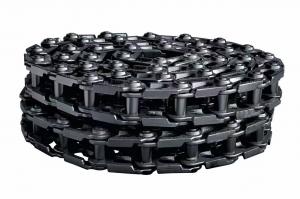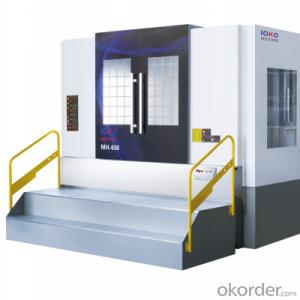ZOOMLION 80 SEAL KIT FOR CYLINDER HIGH QUALITY
- Loading Port:
- Tianjin
- Payment Terms:
- TT OR LC
- Min Order Qty:
- 10 set
- Supply Capability:
- 500 set/month
OKorder Service Pledge
OKorder Financial Service
You Might Also Like
ZOOMLION 80 SEAL KIT FOR CYLINDER HIGH QUALITY
Specifications
Name: Concrete Pump Zoomlion seal kit
colors:black,blue,brown and so on
materials:NBR,BR,NR,SBR and EPDM
Concrete pump zoomlion seal kit for upper housing
seal kit for agitator motor
seal kit to outer housing
seal kit for discharge pipe
seal kit for delivery cylinder
seal kit for plunger cylinder
Seal kit for main cylinder
SEAL KITS PUTZMEISTER,SCHWING, SANY, ZOOMLION
SPARE PARTS FOR CONCRETE PUMP
--AGITATOR MOTOR
--S TUPE FOR 80&90
--MIXER SHAFT
--MIXER FLANGE
--ROCK VALVE
--PLUNGER CYLINDER
--SLEWING SHAFT
--SEAL KITS FOR CYLINDER
--DELIVERY PIPES & ELBOW
--DELIVERY PISTON RAM
--CLAMPS FOR SCHWING AND PUTZMEISTER
--SCHWING SPARE PARTS
--PUTZMEISTER SPARE PARTS
--CIFA SPARE PARTS
--KYOKUTO SPARE PARTS
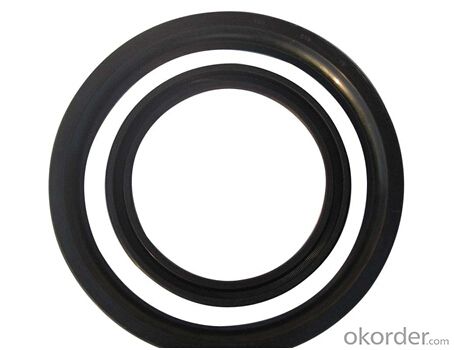

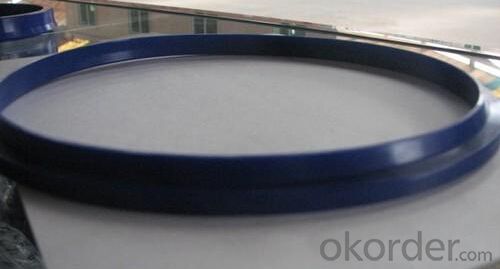
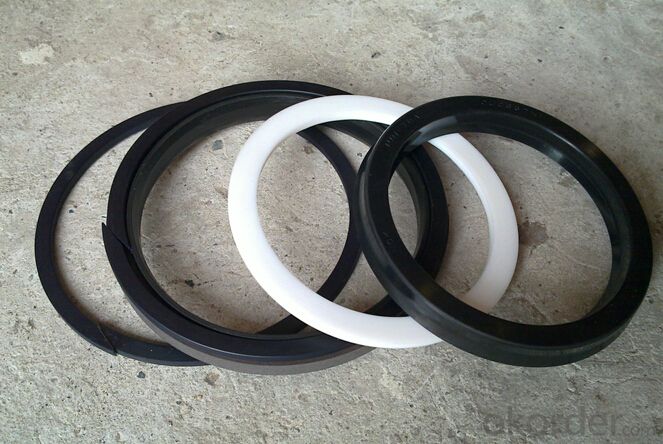
- Q:What are the signs of a damaged or malfunctioning electric motor?
- There are several signs that indicate a damaged or malfunctioning electric motor. Firstly, unusual noises such as grinding, squealing, or banging sounds are typically indicative of a problem. These sounds may suggest that the motor's bearings are worn out or that there is an issue with the motor's internal components. Secondly, excessive heat is another sign of a damaged electric motor. If the motor feels unusually hot to the touch, it could signify that the motor is working harder than it should be or that there is a problem with its cooling system. Thirdly, a motor that frequently trips the circuit breaker or blows fuses is a clear indication of a malfunction. This could be due to an electrical fault within the motor or an overload caused by a faulty component. Furthermore, a damaged electric motor may exhibit decreased performance or a noticeable decrease in power output. This could be observed as a decrease in speed or torque produced by the motor, or even a complete inability to start or function properly. Lastly, excessive vibration or shaking of the motor could indicate misalignment or an issue with the motor's mounting. This can lead to further damage if not addressed promptly. If any of these signs are observed, it is recommended to immediately stop using the motor and consult a qualified technician or electrician to diagnose and repair the problem. Ignoring or continuing to use a damaged motor can lead to further damage and potentially dangerous situations.
- Q:What is the function of a concrete pump outrigger?
- The function of a concrete pump outrigger is to provide stability and support to the concrete pump while it is in operation. The outrigger extends from the sides of the pump and is used to distribute the weight of the pump and concrete being pumped, preventing it from tipping over or causing any instability.
- Q:What are the advantages of using tungsten carbide components in concrete pump spare parts?
- There are several advantages of using tungsten carbide components in concrete pump spare parts. Firstly, tungsten carbide is an extremely hard and durable material, which ensures longer lifespan and increased wear resistance of the components. This means reduced maintenance and replacement costs in the long run. Additionally, tungsten carbide has excellent corrosion resistance, making it suitable for use in harsh and corrosive environments commonly found in concrete pumping applications. Furthermore, tungsten carbide components offer superior strength and toughness, enabling them to withstand high-pressure and heavy-duty operations without compromising performance. Overall, the use of tungsten carbide in concrete pump spare parts leads to improved efficiency, reliability, and cost-effectiveness in concrete pumping operations.
- Q:How often should hopper grate pin retainers be inspected or replaced in a concrete pump?
- Hopper grate pin retainers in a concrete pump should be inspected regularly, ideally before each use, to ensure proper functioning and prevent any potential issues. If any signs of wear, damage, or looseness are detected, the retainers should be replaced immediately to maintain the efficiency and safety of the concrete pump operation.
- Q:What are the signs of a faulty concrete pump control panel?
- Some signs of a faulty concrete pump control panel may include unresponsive buttons or controls, flickering or dimming display, error messages or alarms, inconsistent or irregular pump operation, or a complete failure to start or function.
- Q:Can I get spare parts for concrete pump hopper agitators and vibrators?
- Generally, spare parts for concrete pump hopper agitators and vibrators can be easily found. These components are readily available from various manufacturers and suppliers who specialize in construction equipment and machinery. To check for availability and pricing, it is advisable to reach out to the concrete pump manufacturer or their authorized dealer. Another option is to explore online platforms and marketplaces that offer a diverse selection of spare parts for construction equipment, including concrete pump components. To ensure compatibility and optimal performance, it is crucial to provide detailed information about the make and model of the concrete pump when purchasing spare parts.
- Q:How often should hopper grate clamps be inspected or replaced in a concrete pump?
- Hopper grate clamps in a concrete pump should be inspected regularly, preferably on a monthly basis, to ensure they are in proper working condition. However, the frequency of inspection may vary depending on the usage and operating conditions of the concrete pump. If the concrete pump is used extensively or subjected to harsh environments, more frequent inspections may be necessary, such as every two weeks or even weekly. On the other hand, if the pump is used less frequently or operates in less demanding conditions, inspections can be done less frequently, such as every two to three months. The purpose of these inspections is to identify any signs of wear, damage, or deterioration in the hopper grate clamps. Any loose or worn-out clamps should be promptly replaced to prevent accidents or disruptions during concrete pumping operations. It is crucial to prioritize safety and ensure that the hopper grate clamps are in good condition to secure the hopper grate effectively and prevent any unwanted material spillage. Regular inspections and timely replacements of hopper grate clamps will help maintain the efficiency and reliability of the concrete pump, ensuring uninterrupted operation and minimizing the risk of any potential issues.
- Q:Are there any specific recommendations for the inspection and testing of concrete pump spare parts?
- Yes, there are specific recommendations for the inspection and testing of concrete pump spare parts. It is important to regularly inspect and test the spare parts to ensure their functionality, durability, and safety. Some recommendations include conducting visual inspections for any signs of wear, corrosion, or damage, performing pressure tests to check for leaks or weak spots, and checking the dimensions and specifications to ensure proper fit and compatibility. Additionally, following the manufacturer's guidelines and consulting with experts in the field can provide further guidance on specific inspection and testing procedures for concrete pump spare parts.
- Q:Are there any specific guidelines for the disposal of hydraulic fluids used in concrete pump spare parts?
- Concrete pump spare parts require specific guidelines for disposing of the hydraulic fluids they use. Hydraulic fluids contain chemicals and contaminants that can harm the environment if not disposed of correctly. Here are some general guidelines to follow: 1. Research local regulations: Different regions have specific laws and regulations for disposing of hydraulic fluids. It's important to familiarize yourself with these rules to make sure you comply. 2. Prevent leaks: Properly contain the hydraulic fluid to avoid leaks or spills during transportation. Use containers designed for hazardous materials. 3. Avoid mixing fluids: Don't mix hydraulic fluids with other substances as it can complicate disposal and increase environmental damage. 4. Find a licensed disposal facility: Locate a licensed facility that handles hazardous waste disposal. These facilities have the equipment and expertise to handle hydraulic fluids safely. 5. Follow instructions: When delivering the hydraulic fluid to the disposal facility, follow their specific drop-off instructions. They may require specific labeling or documentation for proper handling. 6. Consider recycling options: Depending on the type of hydraulic fluid, recycling might be an option. Some facilities specialize in recycling hydraulic fluids, which is more environmentally friendly. 7. Educate staff: Make sure all personnel working with hydraulic fluids understand proper disposal procedures and their importance. By following these guidelines, you can safely and responsibly dispose of hydraulic fluids used in concrete pump spare parts, minimizing environmental harm and complying with regulations.
- Q:How much do concrete pump spare parts typically cost?
- The cost of concrete pump spare parts can vary significantly depending on the specific part needed, its brand, quality, and availability. It is recommended to contact suppliers or manufacturers for accurate and up-to-date pricing information.
1. Manufacturer Overview |
|
|---|---|
| Location | |
| Year Established | |
| Annual Output Value | |
| Main Markets | |
| Company Certifications | |
2. Manufacturer Certificates |
|
|---|---|
| a) Certification Name | |
| Range | |
| Reference | |
| Validity Period | |
3. Manufacturer Capability |
|
|---|---|
| a)Trade Capacity | |
| Nearest Port | |
| Export Percentage | |
| No.of Employees in Trade Department | |
| Language Spoken: | |
| b)Factory Information | |
| Factory Size: | |
| No. of Production Lines | |
| Contract Manufacturing | |
| Product Price Range | |
Send your message to us
ZOOMLION 80 SEAL KIT FOR CYLINDER HIGH QUALITY
- Loading Port:
- Tianjin
- Payment Terms:
- TT OR LC
- Min Order Qty:
- 10 set
- Supply Capability:
- 500 set/month
OKorder Service Pledge
OKorder Financial Service
Similar products
New products
Hot products
Related keywords
